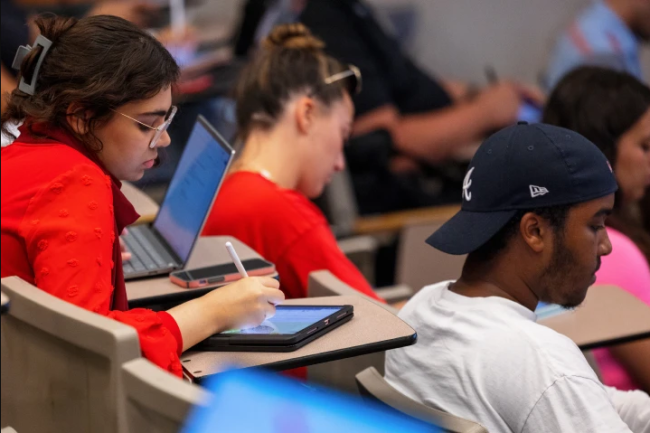You have /5 articles left.
Sign up for a free account or log in.

A recently completed guide helps facilitate productive conversations with administrators and instructors regarding DFW rates.
Indiana University, Indianapolis
When addressing institutional barriers to student success, achieving buy-in and helping practitioners feel supported in initiatives is critical in changing campus culture.
At Indiana University, Indianapolis, the university established a goal in its July 2023 strategic plan to improve course completion rates among 100- and 200-level courses where only 80 percent of students were passing the class.
When considering what strategies to implement that could assist in this work, faculty engagement and development rose to the top, but practitioners wanted to do so in a productive way that didn’t involve finger-pointing.
“Faculty members reported feeling blamed or targeted in conversations around course completion rates, even when several interventions had been tested or when the issues were beyond an individual faculty member’s control,” says Christina Downey, associate vice chancellor for undergraduate education and dean of university college.
To address these concerns, administrators created a step-by-step process that guides unit leaders and groups of disciplinary faculty members through a review of course completion data, followed by a facilitated conversation about past and future courses of action. The guide will be introduced to one department later this spring to collect feedback that will be used to refine the guide, with a later goal of publishing research on the guide and its impact.
How it works: The Course Completion Rate Discussion Guide was inspired by the idea of manualization, which is often applied in mental health settings. The report was authored by Downey and her colleagues Marie Elaine Brown and Anusha S. Rao, who serve as the director and assistant director of the Center for Teaching and Learning, respectively.
“By articulating specific areas of focus for a conversation and following a standard sequence in the process, participants are less likely to feel personally targeted or stigmatized,” Downey says.
The document is designed to be utilized by discussion facilitators, who may be a unit leader or an external party, such as a teaching and learning staff member in a structured discussion with faculty participants.
“The co-facilitators meet with academic unit leaders to go over the process, set goals and build a shared understanding of important contexts at play,” Downey says. “Faculty who will be participants are then prepped before the session with preflection prompts and an overview of what the conversation will and will not involve.”
The guide, a Word document, includes step-by-step instructions to campus leaders on how to prepare faculty to engage in a structured conversation, facilitating the dialogue and completing follow-up. Included is a sequence of questions that can be used verbatim to help keep the group focused and collaboratively productive.
During the session, the goal is to create a trusting space that includes review of course completion data and discussion of successful and unsuccessful interventions to improve these numbers.
“Faculty are then guided into a problem-solving and prioritization phase, with the session ending with a commitment to consider possible evidence-based changes to adopt collaboratively,” Downey says. “The unit leader is then responsible for specific follow-ups after the session, with the co-facilitators remaining available to support as needed.”
What’s different: Addressing low course completion rates is a challenge for many institutions, but IU Indianapolis’s approach flips the narrative, prioritizing faculty member engagement and communication to consider where the cracks in the system may exist, rather than introducing interventions.
“While we do anticipate that this dialogue will ultimately lead to changes that will improve those rates, we intentionally made that goal secondary to the priority of building trust with faculty and positively engaging their expertise,” Downey says.
The impact: IU Indianapolis completed the guide on Nov. 1, and authors have invited faculty members to provide feedback on the document.
So far, receiving detailed and substantive feedback has been a challenge—which could be due in part to institutional capacity challenges following IU Indianapolis’s split from Purdue University—but leaders remain hopeful that engagement will grow throughout the remainder of the academic year.
The guide authors reached out to several departments with lower course completion rates to participate in the structured discussions and provide feedback and will roll out a live pilot in January with one department. Discussion facilitators will collect data to evaluate the process, and the university will collect pre- and postsession feedback from faculty about the experience for later publication, Downey says.
Do you have an academic intervention that might help others improve student success? Tell us about it.




